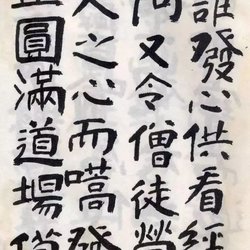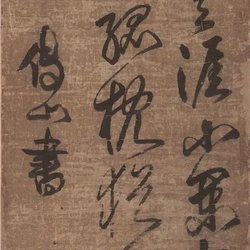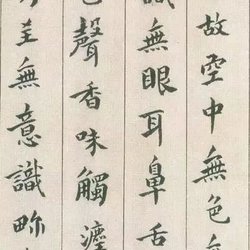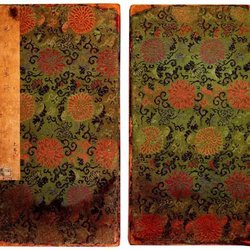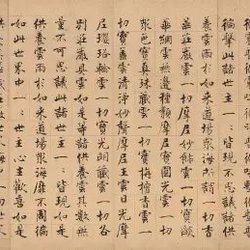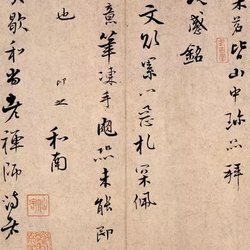Fu Shan (1607-1684), a native of Yangqu County, Taiyuan, Shanxi Province, was first named Dingchen and later changed his name to Shan. He was a famous thinker, calligrapher, poet, and medical scientist in the late Ming and early Qing dynasties. He also had outstanding martial arts skills, prolific writings, and profound and extensive knowledge. He was respected as a great master and was a peak in the academic world in the late Ming and early Qing dynasties. Liang Qichao listed Fu Shan, together with Gu Yanwu, Huang Zongxi, Wang Fuzhi, Li Yong and Yan Yuan, as the "Six Masters of the Early Qing Dynasty" in the world of learning and thought. Fu Shan's experience is very representative among the surviving literati. Through his poems, calligraphy and paintings, we can see an era of great changes and collapse, and also witness the transformation and evolution of the history of Chinese calligraphy and painting in the 17th century.
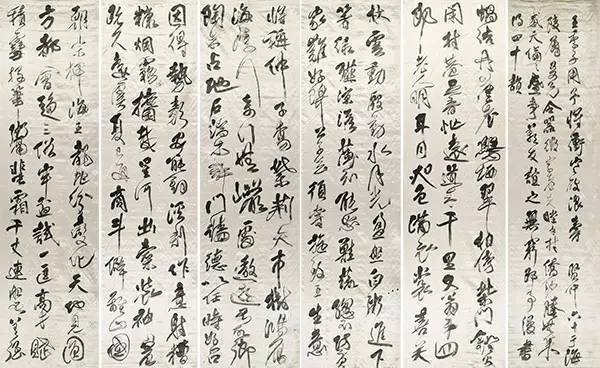
"The Forty-Two Rhymes of the Longevity King Xiyu" Twelve Screens
"Zhenshan" was Fu Shan's nickname after entering the Qing Dynasty, which reflected his determination to fight against the Qing Dynasty and restore the Ming Dynasty and his artistic proposition of promoting truthfulness. To this day, Fu Shan's thoughts, integrity and unique artistic spirit are reflected through the calligraphy handed down from generation to generation, and we can feel his artistic propositions of anti-slavery, advocating truthfulness, advocating individuality and independence, and imitating nature. and a declaration of humanity.

The second poem axis of Du Fu's "Man Cheng Two Poems" in cursive script
At the end of the Ming Dynasty and the beginning of the Qing Dynasty, the Ming Dynasty was troubled by internal and external troubles, and the people were in dire straits. All parties rebelled, and the Qing army entered the customs. The country was destroyed and the family was destroyed, which aroused the resistance movement of "Anti-Qing and Restoration of Ming". The turbulence of the political system often stimulates the active thinking, setting off a huge wave of advocating the "high ancient and elegant" style in the field of literature and art, represented by the literati and literati who survived the Ming Dynasty. From this, a large number of mavericks, high standards and outstanding ideas have emerged. He is a calligrapher and painter whose calligraphy and painting style is cold and lofty, and he is known as the "Remover Painting School" in later generations. Fu Shan is one of the outstanding representatives.
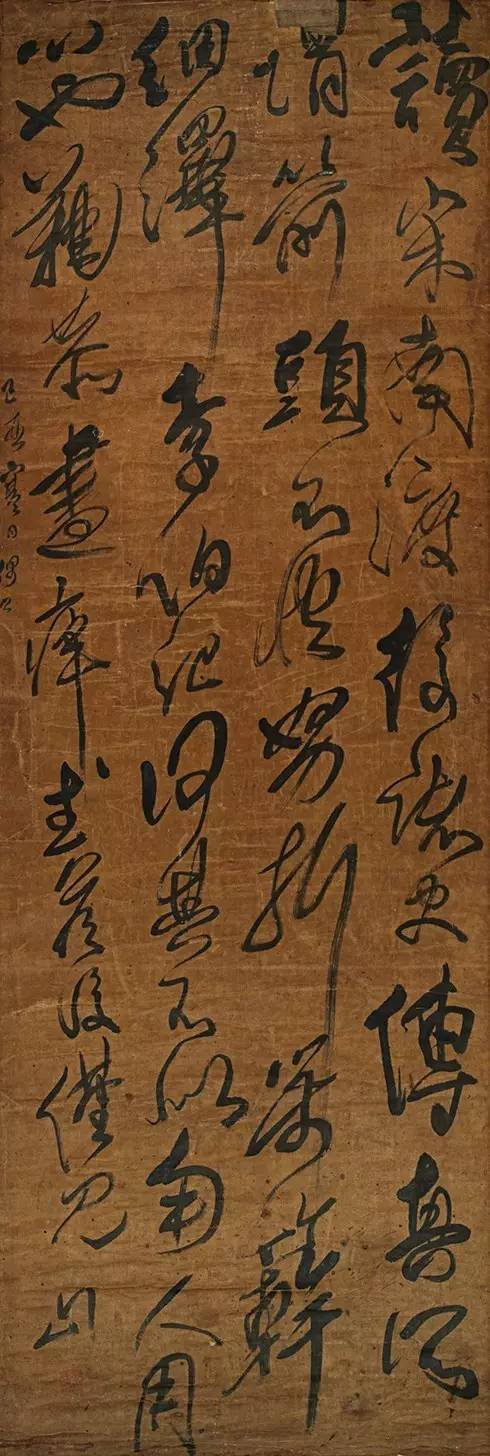
Cursive script "Reading the biographies of various historians after the southern crossing of the Song Dynasty"
When Fu Shan was in his middle age, the Ming Dynasty was at the end of its rope. In 1644 AD, Qing troops entered the Pass, and Fu Shan was 38 years old. In order to maintain his integrity, he entered the mountains and became a Taoist priest. He changed his name to Zhenshan, wore Zhuyi, and called himself Zhuyi Taoist, Danya Weng, etc., all of which reflected the memory of Zhu Ming and the sorrow of the loss of his country and his family. He also used his medical practice as a cover to travel around and carry out secret anti-Qing activities. Facing the life under the foreign rule of the Qing Dynasty, he once described it as "a time between life and death".

Cursive script of Wang Xizhi's "Fu Xiang Qing He Tie" scroll
Fu Shan once went on a hunger strike in prison for nine days to show his resistance, but no longer wanted to die quickly. Later, although he was rescued by his disciples and old friends, he was released. In his later years, Fu Shan lived in seclusion in Taiyuan Tuyao. He refused the erudite Confucianism examination specially set by Emperor Kangxi to win over Han elites on the pretext of illness, and resolutely resigned from the title of "Secretary of the Cabinet" granted by Kangxi.

Cursive script "Liu Wai Ming He Wai Yan" poem scroll
Compared with his contemporaries such as Gu Yanwu and Huang Zongxi, Fu Shan had more comprehensive thoughts and visions. He advocated no distinction between Confucian classics and Confucianism, opposed Confucian orthodoxy, and integrated various schools of thought, Confucian classics and Neo-Confucianism into Buddhism and Taoism. He is also proficient in epigraphy and epigraphy, and pays particular attention to the methods of change that can be applied to the world, opening up a broader path for the study of modern Chinese studies.
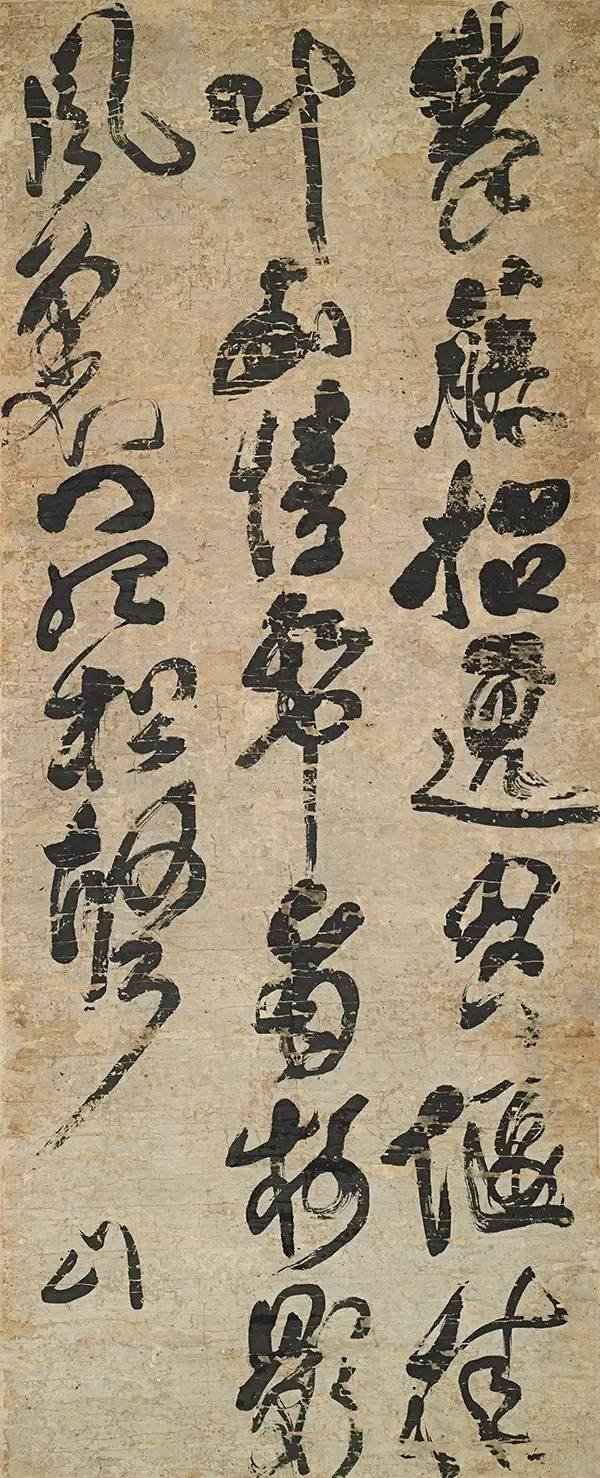
The fourteenth poem axis of Shangguan Zhaorong's "Twenty-Five Poems on Princess You Changning Flowing in the Cup and Pool" in cursive script
Fu Shan's calligraphy was unique in the Ming and Qing dynasties. He was proficient in all styles and was "the best in both cursive, regular script, seal and official script." He has always been regarded as a model by calligraphy researchers and enthusiasts. Fu Shan studied the calligraphy of the "Two Kings" series very deeply.

Li Bai's poem "Ascend the North Tower of Xiezhen in Xuancheng in Autumn" in running script
In addition to copying the calligraphy of the "Two Kings", Fu Shan studied calligraphy, steles, inscriptions, and seal scripts. He once mentioned the importance of seal scripts and scripts in calligraphy: "I don't know the origin of seal scripts, but I am obsessed with learning calligraphy." Ye." He often applied the meaning of seal script to various styles, creating a hybrid style. Fu Shan is particularly famous for his cursive calligraphy. His strokes are flying and free, like an old vine, round and round like a dragon, majestic and graceful, full of strong rhythm and shocking power. In an era when the delicate style of calligraphy dominated the mainstream, Fu Shan advocated that "the calligraphy is like the person" and "people's unique characters are ancient", and advocated tracing the original source, directly tracing the ancient styles of the pre-Qin, Han and Wei dynasties, and exploring the origin and true beauty of Chinese calligraphy. He pointed out the shortcomings of the times and gave guidance. Became a key figure in the rise of epilepsy.
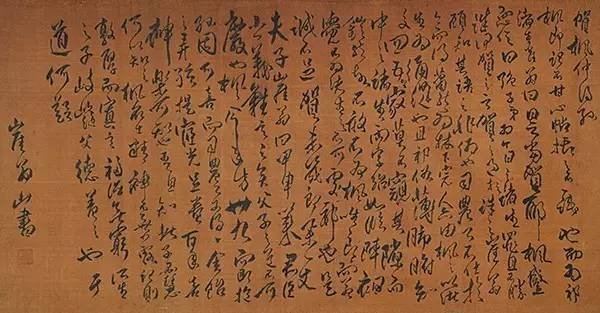
.Handscroll "He Fengzhong desun" in cursive script
Fu Shan's calligraphy style in his later years was more expressive and vivid based on the "Two Kings", harmonizing the "masculine beauty" of stele studies and the softness of calligraphy, and skillfully reaching ever-changing and endless realms. He created a generation of calligraphy style, which is a calligraphy style. an important milestone and turning point in the world. Fu Shan put forward the famous calligraphy proposition of "Four Nings and Four Don's", that is, "It is better to be clumsy than skillful, to be ugly to be charming, to be detached rather than slippery, and to be straightforward rather than arranged."

Fu Mei (son of Fu Shan) "Green Trees and Cangshan Mountain"
Fu Shan was not only a giant in calligraphy, but also made great achievements in painting. In the painting circles of the early Qing Dynasty, there was a saying of "four monks and one monk". The "four monks" refer to the four foreign painting monks Jianjiang, Kuncan, Bada and Shitao. The "one monk" refers to Fu Shan, a Taoist in Zhuyi. The people of the Qing Dynasty classified his paintings as exquisite works. "Bantang Xianbi" once compared his paintings with those of Bada Shanren and considered them to be higher than ordinary painters. There are not many existing paintings by Fu Shan. Most of them are landscapes, flowers, birds, etc., which belong to the literati style. The artistic conception of the work is ancient and clumsy, arbitrary in vertical and horizontal directions, upright and unrestrained in spirit. People at that time praised him as having "a majestic spirit in his chest and a sense of wonder and relaxation beneath his wrists."
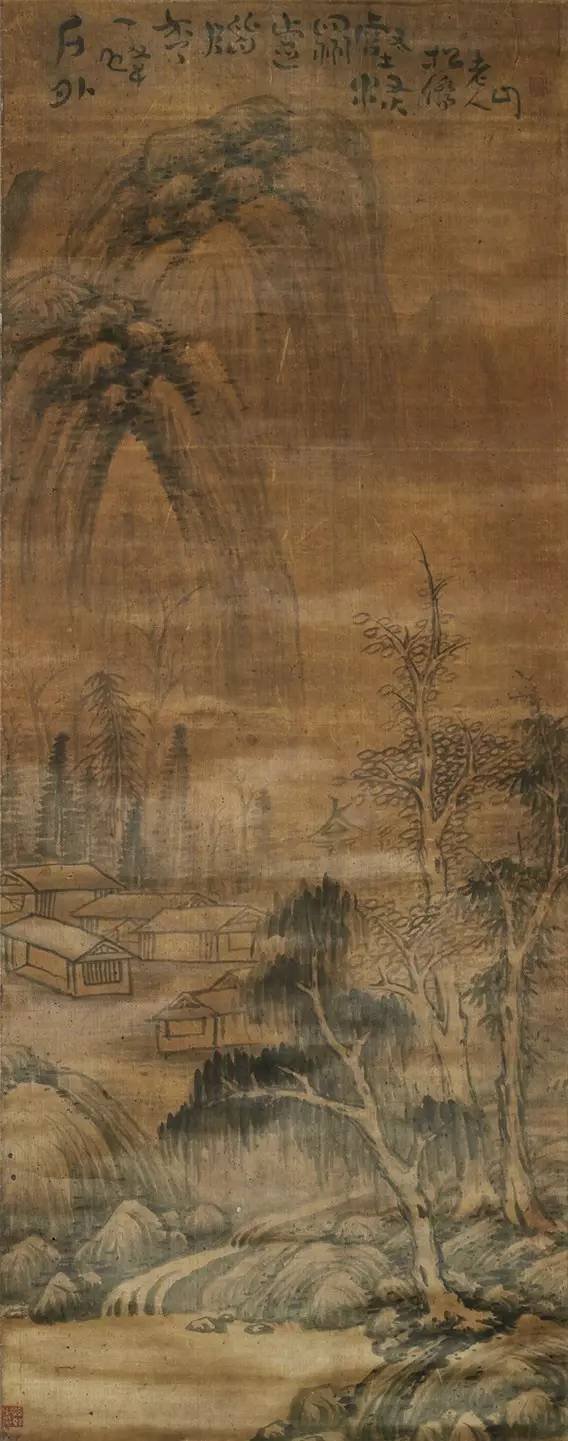
Outdoor peak picture
"The first person to write calligraphy is to create unique calligraphy since ancient times." This is a poem written by Fu Shan to his children and grandchildren. This poem embodies Fu Shan's core spirit and attitude towards calligraphy learning and creation. Fu Shan's life was characterized by integrity and "strange". It was this kind of strength of personality that moved people deeply. "Qi" is more about the manifestation of individual wisdom and talents. Of course, it is also centered on the inner integrity and erudition, so as to achieve a solemn and elegant state. Advocating truth and opposing slavishness can be said to be the spiritual core of Fu Shan's life's thought, art, and scholarship. Rejecting vulgarity and advocating truth has extraordinary and great significance for the times.
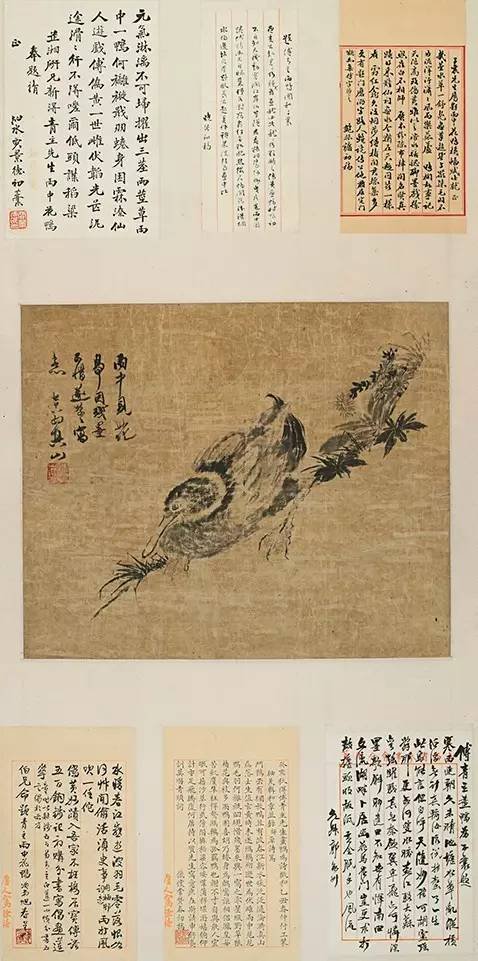
Duck drawing in the rain
Fu Shan's poetry and calligraphy have been passed down from generation to generation, and the court is full of distinguished people. From Mr. Fu Shan on down, his son Fu Mei, nephew Furen and grandson Fu Liansu are all proficient in calligraphy, and all inherit and carry forward Fu Shan's profound and profound artistic and cultural spirit.

Tree fruit picture

